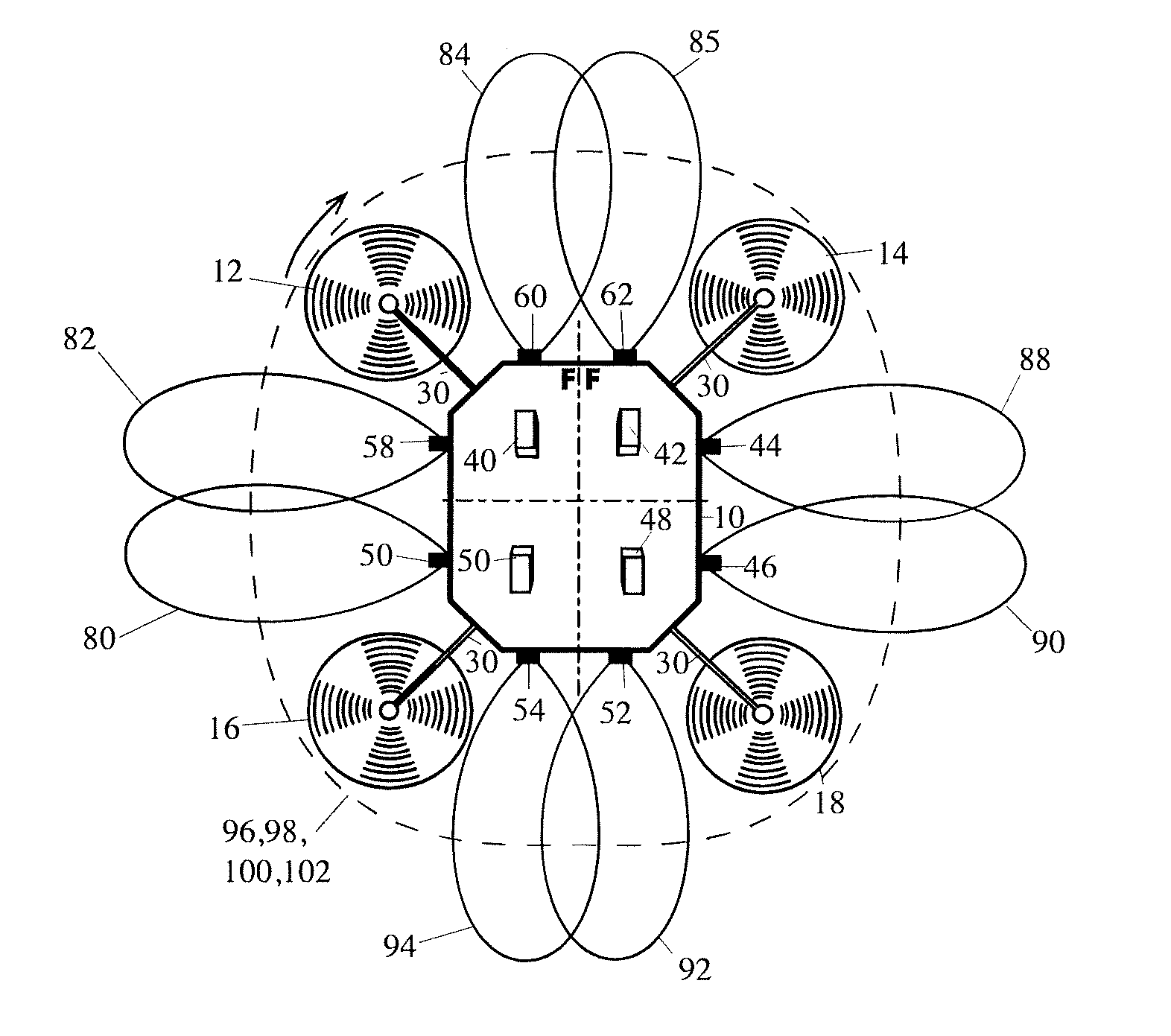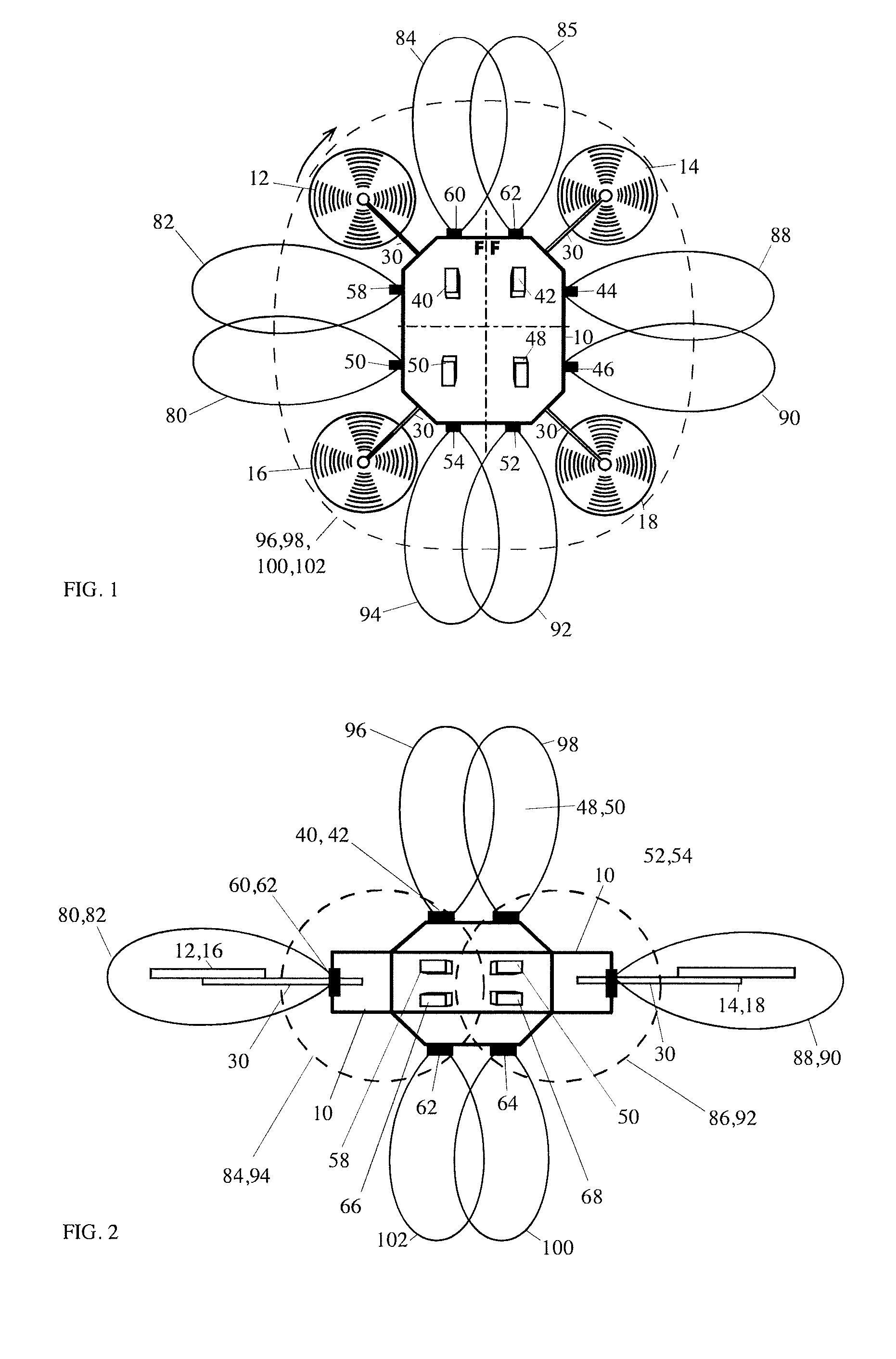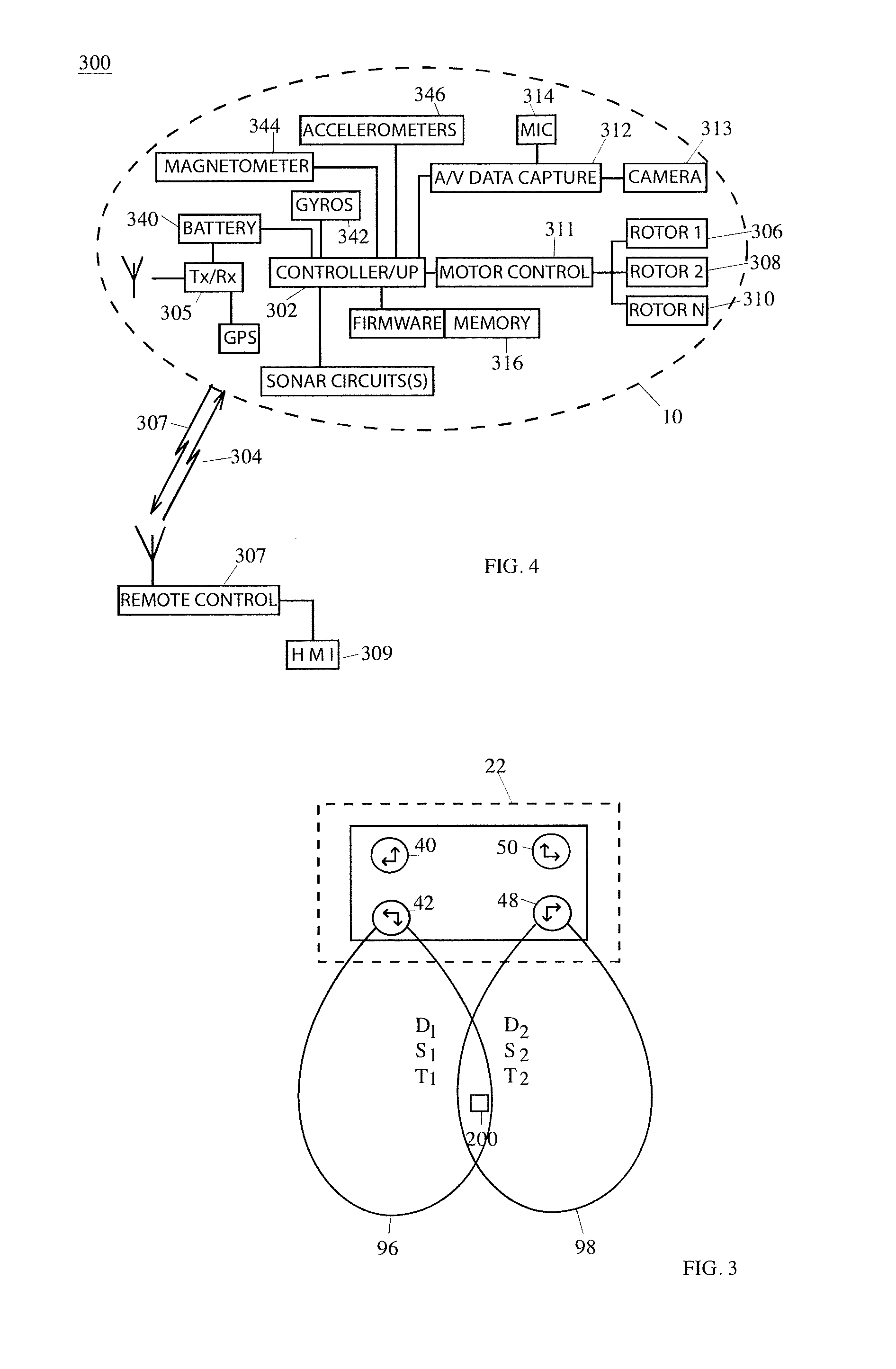Micro unmanned aerial vehicle and method of control therefor
a micro-unmanned aerial vehicle and flight control technology, applied in the field of drones, can solve the problems of remote handlers, inability to mitigate anything, and insufficient delay to jeopardize or compromise remote drones, etc., to achieve effective collision avoidance systems, high degree of self-awareness, and high degree of stability
- Summary
- Abstract
- Description
- Claims
- Application Information
AI Technical Summary
Benefits of technology
Problems solved by technology
Method used
Image
Examples
Embodiment Construction
[0034]As a way of compensating for drift in motor control and general drift in the UAV arising from variation is air pressure and / or local currents or thermal effects, one might consider the use of collision bars or push rods (collectively “bumpers”) that strategically extend outwardly from the body of a UAV. In this way, the bumpers contact an obstacle and therefore mitigate the temporary loss of control. However, this approach is considered to be compromising and generally ineffectual given that range and usefulness of the UAV are dependent upon overall weight and unobtrusiveness. In this respect, the bumpers add to the overall weight (thus limiting the payload capabilities of the UAV) and increase the overall size of the UAV, thereby increasing the size of the UAV and potentially decreasing aerodynamics and the ability to control flight of the UAV. In fact, the use of bumpers, while logical, is fundamentally at odds with the functional requirement for a UAV since the bumpers serv...
PUM
 Login to View More
Login to View More Abstract
Description
Claims
Application Information
 Login to View More
Login to View More - R&D
- Intellectual Property
- Life Sciences
- Materials
- Tech Scout
- Unparalleled Data Quality
- Higher Quality Content
- 60% Fewer Hallucinations
Browse by: Latest US Patents, China's latest patents, Technical Efficacy Thesaurus, Application Domain, Technology Topic, Popular Technical Reports.
© 2025 PatSnap. All rights reserved.Legal|Privacy policy|Modern Slavery Act Transparency Statement|Sitemap|About US| Contact US: help@patsnap.com



